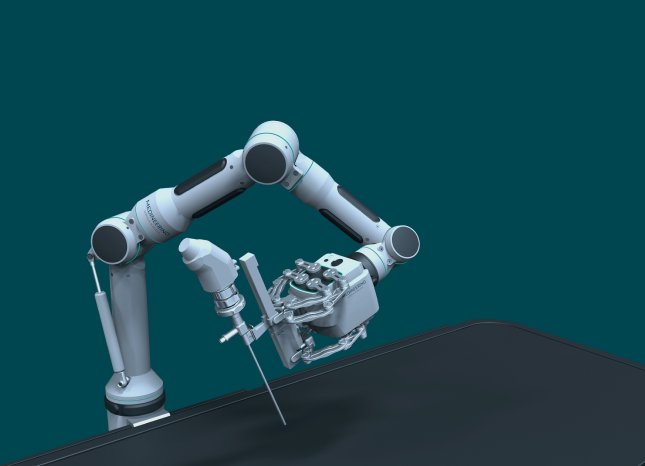The focus of the product development lays in the robot’s optimal integration into the surgeon’s workplace and his workflow throughout all phases of the surgical intervention. Therefore, the compact and application-specific design and the usability of its human-machine interface took the main role during the clinical evaluation. “For the product philosophy of Medineering the feedback of surgeons is essential. We are very pleased to collaborate with highly motivated surgeons like Francesco, Professor Fontanella and Professor Nicolai of the University of Brescia. Their interest and motivation enables us to develop robots supporting the work of ambitious surgeons” said Maximilian Krinninger, CTO of Medineering.
“Our team at the University of Brescia has believed for a long time that a robotic holder would significantly help in endoscopic skull base surgery. The reason for this are increasing operating times and the need of being extremely precise, especially when dealing with complex pathologies in areas that are anatomically dense of sensitive neurological structures. Having just developed a preprototype in Brescia, we are extremely excited to see that Medineering has been able to fully develop a robotic holder for endoscopic endonasal skull base surgery, which is ready to be used in the operating room. We will look forward to further evaluating the Endoscope Guidance Hand, which is for sure an extremely promising, new, advanced tool for endoscopic skull base surgery” said Dr. Francesco Doglietto, Assistant Professor in Neurosurgery at the University of Brescia.
The launch of the Endoscope Guidance Hand will be in spring 2017. It will be available for ENT- and skull base surgeons who want to benefit from a new robotic approach.
*Not yet CE marked or 510(k) cleared and not available for distribution or sale.

